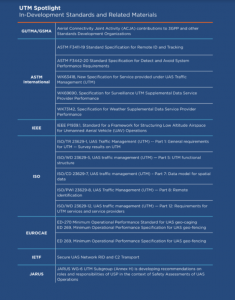A new white paper from the Global UTM Association (GUTMA) Designing UTM for Global Success has identified the key principles for creating a successful, globally-interoperable UTM system.
According to the paper: “The emerging aviation community must define and validate how alternative approaches to traffic management can uphold applicable target levels of safety in the airspace system and equitable access to airspace whilst meeting the business imperatives of efficiency, reliability and economies of scale. Again, the focus must be on safety in the context of integration, not segregation.”
The current air navigation service provider (ANSP) models, says GUTMA, cannot scale to accommodate emergent unmanned traffic volumes, especially given their diverse flight characteristics which differ considerably from most manned aircraft operations. “Therefore, the critical challenge is how to position UTM Service Suppliers (USS) in such a way that they are agile, available and scalable, whilst capturing the rigor of the existing ATM model and meeting safety requirements.”
The paper also highlights the progress being made around the world in developing standards for interoperable UTM systems.

The paper outlines recommendations to all stakeholders designing a UTM system:
- GUTMA recommends that all stakeholders focus on global harmonization efforts that promote a safe, fair and secure deployment of UTM solutions in the context of integration with other airspace users.
- GUTMA recognizes the importance of digitization and urges all stakeholders to continue working towards digitization of their systems in order to allow the full integration of UTM services.
- GUTMA supports an open, interoperable and federated UTM architecture that allows governments the flexibility to retain their prerogatives where a clear need for some services to be centrally provided exists.
- GUTMA recommends that all stakeholders familiarize themselves with the key technology trends to effectively understand the UTM architecture and its operationalization.
- GUTMA recommends that all stakeholders invest significant resources in standard development efforts geared towards the creation of a common global UTM framework.
- GUTMA recommends that regulatory agencies and ANSPs actively engage and support efforts to demonstrate, operationalize and deploy UTM services by creating appropriate environments (such as the EASA involvement with the European Network of U-Space Demonstrators, the FAA UTM Pilot Program or the Swiss FOCA Swiss U-space Implementation) that can accelerate the necessary learnings by both government and industry.
- GUTMA recommends governments to adopt an operation-centric, proportionate, risk- and performance- based regulatory framework.
For more information
GUTMA published its first public paper “Designing UTM for global success”




